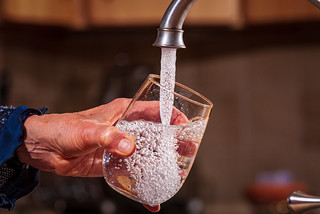Water
Clean water is vital to human health and to all living beings. From bacteria to bison, from microscopic algae to the great redwood trees, life cannot exist without water.
Water Pollution Impacts

Impacts of Water Pollution to Humans
Pollution, including industrial, municipal, and agricultural waste to surface waters like rivers, streams, lakes, and estuaries can harm people’s health when they go swimming at the beach, drink water, or eat fish from contaminated water bodies.
For example, swimming in water polluted by sewage can cause gastroenteritis.
Impacts of Water Pollution to Animals and Plants
Water pollution affects plants and animals much like it affects humans. And, if something harms one part of an ecosystem - one species of plant or animal, or the water - it can have an impact on everything else. Everything in an ecosystem is connected.
For example, Harmful Algal Blooms (HABs) can impact the entire ecosystem by causing low light and oxygen levels, or even producing toxins, killing fish and plants. HABs are caused by excessive growth of aquatic bacteria resulting from nutrient overloads due to human activities like agriculture and sewer overflows.
EPA Actions on Water Pollution

EPA, state, Tribal and local partners have made progress in preventing pollution and cleaning up water under the Clean Water Act and the Safe Drinking Water Act. Several examples are listed below.
This benefits not just human health, but animal, plant, and ecosystem health.
Clean Water Successes
Under the Clean Water Act (CWA), EPA:
- Makes our water and our lives safer, by restoring once polluted waters to be boatable, fishable, and swimmable.
- Protects water quality, sustaining ecosystems and promoting biodiversity.
- Protects and promotes restoration of wetlands.
- Reduces waterborne illnesses and other public health issues associated with water pollution.

Under the Safe Drinking Water Act (SDWA), EPA works to:
- Safeguard human health by providing access to safe, clean and reliable drinking water.
- Reduce human exposure to chemical and microbial contaminants through National Primary Drinking Water Regulations on 90 contaminants.
- Reduce lead exposure by replacing lead pipes that deliver drinking water.
- Protect nearly 100 million people from exposure to toxic “forever chemicals” in drinking water. Read more about theFinal Per- and Polyfluoroalkyl Substances (PFAS) National Primary Drinking Water Regulation.
These highlights are just some examples of preventing pollution or cleaning up water. More examples can be found on the Office of Water's 2023 Accomplishments webpage.
